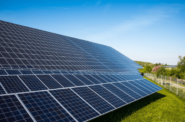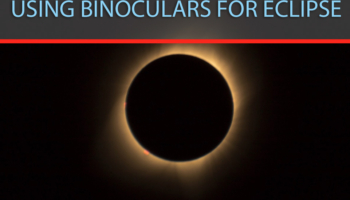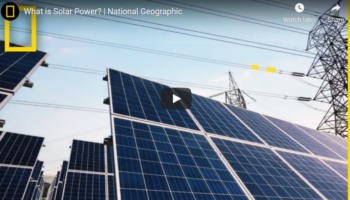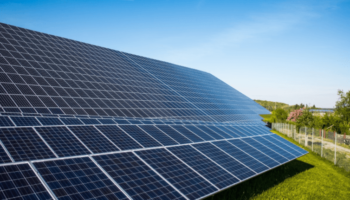Where Can Solar Energy Be Found?
Solar power is energy from the sunlight that’s converted into thermal or electrical energy. The amount of solar energy that the earth receives each day is many times larger than the whole amount of energy that people consume. But on the surface of the earth, solar energy is a factor and intermittent energy resource. The quantity of sunlight and the intensity of sunlight varies by time of day and place. Climate and weather conditions impact the access to sunshine on a daily and seasonal basis. The type and magnitude of a solar energy collection and conversion system determines how much of the available solar energy we can convert into energy.
Solar Power is the cleanest and most abundant renewable modern technology. We can exploit this energy for many different applications, including creating energy, providing light or a comfortable interior environment, and heating water for domestic, commercial, or industrial use.
Where can you find solar energy?
Solar Power Is Everywhere the Sun Shines. Solar power is the Earth’s most available source of energy. Solar energy generation is able of providing many times our current energy requirements. But, it is a sporadic source of energy, which means that the amount of energy that you would get is the same all the time. However, it may be supplemented by electricity storage or using additional energy sources.
There are several methods to harness solar energy: photovoltaics (also known as solar electric), solar heating & cooling system, focusing solar energy (typically constructed at utility-scale), and passive solar panels.
The first three are active solar systems that use mechanical or electrical devices that convert the sun’s heat or light to another kind of usable energy. Passive solar buildings are designed and oriented to collect, save, and disperse the heat energy from sun to keep the comfort of their occupants without using moving parts or electronics.
Top 6 Countries Using Solar Energy
- Germany
Germany is, without a doubt, the top country for using Solar energy. Not only has Germany installed thousands of solar panels already, but it appears to be using nothing but renewable energy by 2050. The nation has stayed the top buyer of solar power panels for several years now, and is expected to keep on moving forward in the exact same direction throughout the upcoming months.
- Spain
Even though Spain hasn’t converted to solar power to the extent that Germany has, it’s been making an effort to use renewable energy more and more for several decades. Spain was the world’s leader for solar power. During its economic meltdown, there was much less need for electricity, which postponed the installing of solar power panels within the country.
- Italy
Italy is coming up just behind Spain, with 9% of its energy being from solar power. Italy is doing a lot to convert to solar energy, and, every 2 weeks, there are far more solar panels set up in the country than there in California during a whole year.
Unreliable information makes it difficult to predict exactly how much more solar energy is going to be used by Italy later on. Before, estimates predicted that Italy would have tons of solar panels installed by the end of the calendar year, however, the estimates turned out to be incorrect, and Italy fell below the elevated levels expected.
- Japan
Throughout 2009, Japan spent $9 billion in an effort to encourage solar energy within the nation. In precisely the exact same year, the prime minister announced that 32,000 public colleges within Japan would see the installation of solar power.
Until March 2011, the country had been developing quickly with regard to solar power, and more than 990 megawatts were installed than the year before.
- United States
As electricity prices get high, Americans are demonstrating more Interest in solar energy. The increasing quantities of sunshine that the US sees annually is just another factor that has encouraged the country to think about using more solar power.
California is the country with the most solar power, and is the clear leader at the USA with 60 percent of solar installations in America.
Programs are in place to install even much more solar power in Coming years, regardless of the potential expiration of the federal solar tax credit.

- Czech Republic
Fast economic development in the Czech Republic was one of the principal reasons why solar power is becoming dominant in this particular nation.
Czech Republic does not have too much solar energy as Spain or But states like Spain and Italy see a lot more sun every year. Additionally, Spain, Italy, Germany, the U.S., and Japan have much larger populations. The fact that property in the Czech Republic is cheaper than land in Spain has encouraged the growth of solar energy significantly, although there is less sunshine, the low price of purchasing property has compromised the lack of sunshine.
How is Solar Energy Stored?
Both photovoltaic and solar thermal technologies rely on Sunlight. However, what about at night, once the sun is down but you need electricity? Can solar energy be stored?
Storing Photovoltaic Energy
Solar panels cannot produce electricity at night or during cloudy periods. But rechargeable batteries can save electricity: the photovoltaic panels charge the battery during the daytime, and this power can be drawn upon at the day.
Storing Thermal Energy
Residential solar hot water systems -that utilize the sun’s renewable energy to heat water for the home – have a simpler storage system. Water flows through solar collectors on the roof, then head to a storage tank in which it can be drawn upon as necessary.
Concentrating collectors
Concentrating solar energy technologies utilize mirrors to reflect and concentrate sunlight onto recipients that absorb solar power and convert it into heat. We utilize this renewable energy for heating houses and buildings or to create electricity using a steam turbine or a heat engine that pushes a generator. There are three main types of concentrating solar thermal power systems:
- Linear concentrating systems, Including parabolic
- Solar power towers
- Solar dish/engine systems
Solar Energy Pros and Cons
Everything has its, so, naturally, there must be numerous solar power advantages and solar energy disadvantages also, right?
Benefits of Solar Energy
Renewable
Solar power is a renewable energy supply which means that we cannot run out of solar energy, as opposed to non-renewable energy sources (e.g. fossil fuels, coal and nuclear).
Sustainable
Renewable energy source can also be sustainable. Sustainable energy resources meet the requirements of the present without compromising the capacity of future generations to meet their needs. In other words, solar energy is sustainable since there is no way we can over-consume.
Environmentally Favorable
Harnessing solar Energy does normally not lead to contamination. But, there are emissions associated with the manufacturing, transport and installation of solar power systems -almost nothing in contrast to the majority of conventional energy resources. It’s apparent that solar energy reduces our dependence on non-renewable energy resources. This is an important step in combating the climate catastrophe.
Fantastic Availability
Solar energy is available all around the world.
Reduce Electricity Costs
With the debut of net metering and feed-in tariff (FIT) schemes, homeowners can now “market” surplus electricity, or receive bill credits, even during times when they create more electricity than what they actually absorb.
This means that homeowners can reduce their overall electricity expenses by going solar. Adding solar panels to your residence can bring in yearly savings of well over $100 in many states. In Hawaii, residents save on average $64,000 following 20 years!
Today, most Homeowners choose leasing or power purchase agreements to finance their solar panels. This drastically reduces, or sometimes even totally eliminates the upfront expenses of a solar panel, and allows homeowners to start saving money in the very first day.
Many Programs
Solar energy may be used for many distinct purposes. It can be used to create power in areas that lack a grid connection, for distilling water from Africa, or perhaps to power satellites in space.
Solar power is also Called “The People’s Power”, which describes how readily deployable solar panels are in the customer level (both photovoltaic and solar thermal).
Silent
There are no moving parts involved in most applications of solar energy. There is not any noise associated with photovoltaics.
Financial Support from Government/State
Government and state rebates have become available both on utility-scale and for the majority of homeowners. This means that the effective prices of solar panels are a lot less than what they used to be. In some cases, the purchase price of a residential photovoltaic system could be cut more than 50%.
As of 12/31/2008, the U.S. government offers a 30% tax credit with no upper limit. Chances are your home is also eligible for other grants and rebates.
Low Maintenance
The majority of Today’s solar power systems don’t required a lot of maintenance. Residential solar panels usually only require cleaning a couple of times annually. Serious solar manufacturers send 20- or 25-year guarantees with their solar panels.
Technology is Improving
Technological advancements are continuously being made in the solar power market. Innovation in nanotechnology and quantum physics has the potential to triple the electrical output of solar panels.
Disadvantages of Solar Energy
Expensive
Is solar power really pricey? This is most likely the most debatable aspect on the whole solar energy pros and cons list. The driving forces behind the development of solar energy are rooted in politics. On the other hand, the U.S. government, similarly to the rest of the world, provides incentives to every significant energy manufacturing marketplace –not only solar.
In 2010, coal obtained $1,189 billion in federal subsidies and support for power production while solar is not far behind at $968 billion.
Nowadays, the best solar panels can in many situations be less expensive than purchasing electricity from the utility. This would happen to be possible without any incentives.
Intermittent
Solar Power is an intermittent energy resource. Access to sunlight is limited at certain intervals (e.g. morning and nighttime). Predicting overcast days can be difficult. This is why solar power is not our first choice when it comes to meeting the base load energy demand. However, solar energy has fewer problems compared to wind power in regards to intermittence.
Energy Storage is Expensive
Energy storage systems such as batteries will help smoothen out load and demand, making solar power more stable, but these technologies are also expensive.
Fortunately, there’s a good correspondence between our access to solar energy and human energy demand. Our power demand peaks in the middle of the afternoon, which also happens to be the exact same time there’s a lot of sunlight!
Associated with Pollution
While solar energy certainly is significantly less polluting than fossil fuels, some problems do exist. Some manufacturing processes are related to greenhouse gas emissions. Nitrogen trifluroide and sulfur hexafluoride was traced back to the production of solar panels. These are a few of the strongest greenhouse gases and also have many thousand times the impact on global warming in comparison to carbon dioxide. Transportation and installation of solar power systems can also indirectly lead to contamination.
The bottom line is this: There is nothing that’s completely risk-free from the energy world, but solar power compares very favorably with the rest of the technologies.
Exotic Materials
Particular solar cells require materials which are costly and rare in nature. This is particularly true for thin-film solar cells which are based on either cadmium telluride (CdTe) or copper indium gallium selenide (CIGS).
The Potential Of Solar Energy
The potential of solar energy that may be used by people differs from the total amount of solar energy present near the surface of the world because variables like geography, time variation, cloud cover, and the land available to individuals restrict the amount of solar energy which we can acquire.
Geography affects solar energy potential because areas that are closer to the equator have a larger amount of solar radiation. However, using photovoltaic hat may follow the position of the sun can considerably increase the solar energy potential in areas that are further from the equator.
Time variation effects the possibility of solar energy since during the night there is not much solar power on the surface of the planet for solar panels to consume. This restricts the amount of energy that solar panels can consume in one day.
Cloud cover can impact the capacity of solar panels since clouds block incoming light from sunlight and reduce the light available for solar cells.
Additionally, land availability has a massive influence on the solar energy since solar panels can only be installed on land that is otherwise unused and suitable for solar panels. Roofs have been shown to be the right location for solar cells, as many individuals have found that they can collect energy straight from their homes this way. Other areas that are acceptable for solar cells are lands that aren’t being used for businesses in which solar plants could be established.
Uses of Solar Energy in Daily Life
Commercial Power Generation
A growing number of large solar installations generate power that strengthens electricity from conventional fossil and nuclear fuel power plants. As an example, the Ivanpah solar energy plant, scheduled for completion in 2013, is anticipated to produce 377 megawatts of energy — enough to provide the theoretical energy needs of 144,000 houses. In the United States alone, solar-based power plants accounted for 880 gigawatt-hours of power as of June 2013, an increase of 57 percent over the same period in 2012.
Hot Water
Solar rooftop collectors utilize heat gathered from sunlight for warm water and building warmth. These solar installations don’t convert light into electricity; they use the sun’s heat to raise the temperature of warm water or another fluid flowing through pipes in the collector. The construction then uses the warm water for swimming pools, showers and laundry and other applications. In many cases, the heating system has a conventional gas or electric utility link that heats the water in the event of prolonged cold temperatures or muddy weather.
Road Signs
Small-scale solar power for lighting and other applications is handy since it avoids the requirement for gas-powered wiring or generators to an electrical outlet. A small solar panel provides enough power to light up the stop signs or message boards utilized in construction work. Other types of solar-powered signs comprise speed limit signs and radar-driven speed warnings.
Lighting
Unlike conventional exterior lights, solar light requires no complex installation as the lights are both wireless and use sunlight throughout the daytime to bypass the need to get grid-supplied power through the night. Furthermore, the aesthetic of contemporary solar light can significantly enhance the exterior decor of a house.
Transportation
Railroads, subways, buses, airplanes, cars and even streets are often powered with solar panels, and solar transport is getting to be a popular offering from the renewable energy industry.
Satellites
In space, without clouds or air to reduce sun, 1,300 g of electricity per square meter arrives from the sun. Satellites use solar cells to convert sunlight into electrical energy, powering sophisticated on-board radio and computer gear and affecting your daily life through satellite radio, television and weather forecasting. Since they’re expensive to start, operate hundreds of miles above the Earth, and are extremely hard to keep, satellites need a reliable supply of power, and photovoltaic cells provide it for as many as 20 years.
Solar Energy Facts
1 – Solar energy is a completely free source of energy and it is seen in abundance. Although the sun is 90 million miles from the earth, it requires less than 10 minutes for light to travel out of that much of distance.
2- The earth gets 174 Petawatts of incoming solar radiation in the upper air.
3- Solar energy has also an additional usage. By means of photosynthesis, solar power is transformed by green plants into chemical energy that creates the bio mass which makes up the fossil fuels.
4- Solar power has been recognized as the future of other energy sources since it’s non polluting and helps combat the Greenhouse effect on global climate created by use of fossils fuels.
5- The earth receives about 1,366 g of direct solar radiation per square meter.
6-The price of solar panels has fallen by 80% because 2008,5 and it is expected to keep falling out.
